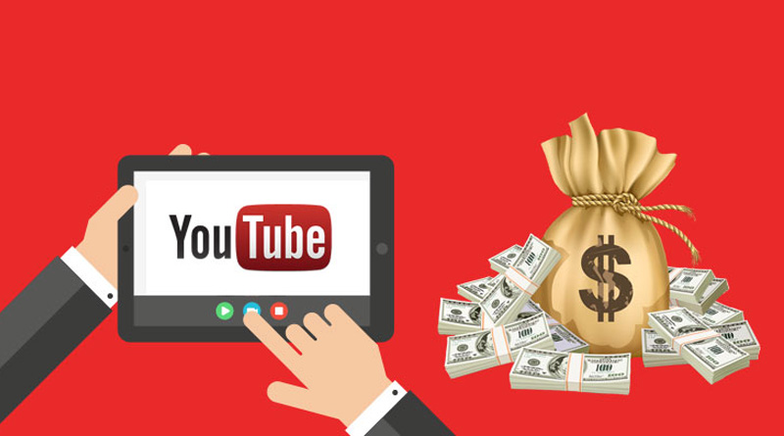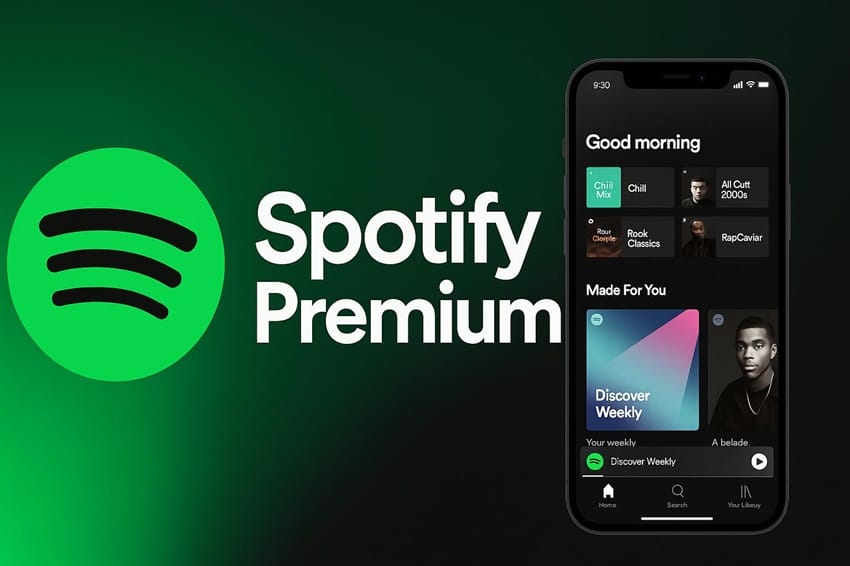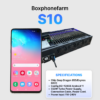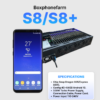Both Spotify and YouTube stand as undeniable titans in the digital media consumption landscape, dominating music and video globally. However, the way these mega-platforms remunerate their content creators and artists is radically different. For a musician releasing a track or a creator uploading a video clip, the crucial question is: where should I focus my efforts to maximize my return on investment (ROI)?
This exhaustive analysis, vital for the MMO and digital marketing community, will meticulously break down the monetization models of both platforms. Our goal is to ‘dissect’ and directly compare how much money one million plays or views can generate, providing a clear roadmap to optimize your automation strategies and income generation.

YouTube’s Monetization Model: Diverse but Complex
YouTube, the home of video content, does not offer a single path to monetization but rather a multi-income stream ecosystem. This diversity, while a huge advantage, introduces a complexity that requires strategic management on the part of the content creator.

Main Revenue Source: Advertising Revenue (Google AdSense)
The majority of revenue is generated through ads shown before, during, and after your video. The key terms here are CPM and RPM:
- CPM (Cost Per Thousand Impressions): Is what advertisers pay YouTube for every 1,000 times their ad is shown on the content.
- RPM (Revenue Per Thousand Views): Is what the creator actually earns for every 1,000 views, after YouTube takes its share (approximately 45% of the advertising revenue).
It is essential to understand that RPM fluctuates drastically and is the key factor for any digital marketing strategy on this platform. The main factors that determine a high RPM are:
- Geographical Location of the Viewer: Viewers from countries with high purchasing power and more competitive advertising markets (such as the United States, Canada, or Australia) generate significantly higher RPMs than those in emerging markets.
- Content Theme: “Money” niches (finance, technology, automation, real estate) usually attract advertisers with larger budgets than music or entertainment, which raises the RPM.
- Video Length: Videos longer than 8 minutes can include “mid-roll ads,” allowing the creator to insert multiple ad breaks, increasing the total number of ad impressions and, therefore, the RPM.
YouTube Premium Revenue
Creators also receive a portion of the YouTube Premium subscription fee from users who watch their content. This income is distributed based on the amount of viewing time a subscriber dedicates to the creator’s content, and is usually a higher quality income per view than that generated by traditional advertising.
Direct Fan Funding Sources (Fan Funding)
This is a massive advantage that YouTube possesses over pure music monetization on Spotify. The interaction and direct support options for the creator include:
- Channel Memberships: Fans pay a monthly fee in exchange for exclusive benefits.
- Super Chat, Super Stickers, Super Thanks: Direct donations made during live streams or pre-recorded videos.
- Merch Shelf: Official merchandise sales directly below the videos.
Spotify’s Monetization Model: Focused on “Plays”
Spotify simplifies the income process for artists, paying primarily through a single channel: royalties generated by plays or ‘streams’.

The “Pro-Rata” Model (Common Income Pool)
Spotify’s payment system is based on the Pro-Rata model. In simple terms, money is channeled through a global income “common pool”:
- All money generated from Premium subscription fees, plus advertising revenue from Free accounts, is collected in a single fund.
- This fund is distributed to artists based on the percentage of total plays their music generated that month. If your track represented 0.5% of all Spotify plays globally that month, you get 0.5% of the total fund (after Spotify and the distributor take their share).
The ‘Mythical’ Figure: 0.003 $ – 0.005 $ per Play
The industry often cites an approximate figure of 0.003 $ to 0.005 $ per stream. However, it is crucial to emphasize that this is not a fixed fee. The actual payout figure depends on:
- Type of Listener: A play from a Premium user pays significantly more than a play generated by a Free account (which only contributes advertising revenue).
- Geographical Location: Plays from key markets (US, UK, Germany) have a higher value than those from other territories, a factor that must be taken into account in any automation reach strategy.
- Agreements with Distributors/Labels: The final amount the artist sees in their pocket is the result of the split between the copyright owner, the distributor, and the artist themselves.
YouTube Music (Direct Competitor)
It is important to mention YouTube Music. Although the application is smaller in terms of pure subscribers than Spotify, it is often reported to pay at a higher rate per stream, in the range of 0.006 $ – 0.008 $. However, the total volume of streams is generally lower than Spotify.
Putting on the Scale: 1,000,000 Plays/Views = How Much Money?
This is the most important comparison for any musician or creator using phone farm or cloud phone solutions to boost their tăng tương tác strategies. We will use average figures for a direct comparison, acknowledging the inherent variability in both models.
1,000,000 Streams on Spotify
Assuming an average payout rate of 0.004 $ per stream (a figure that can oscillate), the gross income for the copyright owner is:
1,000,000 streams * 0.004 $ = 4,000 $ USD
It is essential to remember that this amount (4,000 $) must still be divided with the record label, the publisher, and the distributor before reaching the artist’s pocket.
1,000,000 Views on YouTube (Music Video)
Assuming a music video generates an average RPM of 5 $ (this is an optimistic figure, as low-quality vlogs can have an RPM of 1 $ – 3 $):
1,000 views * 5 $ RPM = 5,000 $ USD
Critical Note: This figure has enormous volatility. It could be as low as 1,000 $ or exceed 10,000 $ if traffic comes from countries like the US (high CPM) and the video has multiple mid-roll ads. Furthermore, this 5,000 $ income does not include potential profits from Super Chat, Memberships, or merchandise sales, which can be substantial on an active music channel.
Quick Comparison Table: Spotify vs. YouTube Income
| Feature | Spotify | YouTube |
|---|---|---|
| Payment Model | Pro-Rata (Common Pool) | Advertising Revenue Share (AdSense) + Premium |
| Payment Unit | Per Play (Stream) | Per 1,000 Views (RPM) |
| Estimated Rate per Unit | 0.003 $ – 0.005 $ per stream | 2 $ – 10 $ per 1,000 views (RPM) |
| Estimated Income for 1 Million Units | 4,000 $ USD (Gross) | 1,000 $ – 10,000 $ USD (Net) |
| Additional Income Sources | Minimal (Merchandise sales via API) | Memberships, Super Chat, Merch Shelf (Fan Funding) |
| Content Requirement | Audio File | Video (greater production investment) |
Conclusion: Should You Choose One or Both?
When analyzing the remuneration models, the answer is clear: a digital creator or artist should not choose between Spotify and YouTube. They must use both platforms strategically as part of their digital marketing ecosystem, leveraging the strengths of each. For the MMO and automation professional, understanding their roles is crucial:
- YouTube offers higher income potential and greater diversification, thanks to its powerful advertising ecosystem (which can be extremely lucrative with high RPM) and the added value of fan funding. It requires, however, a greater investment in video production.
- Spotify is the source of passive and stable income. Once your music is on major playlists or you have a loyal fan base, streaming royalties flow consistently, becoming a reliable income source.
Final Recommendation:
Use Spotify as your official “home” for your music, the source of stable income, and the metric of your pure musical popularity. On the other hand, implement YouTube as your “marketing engine,” brand builder, and community connection tool (through vlogs, behind-the-scenes, or high-production-value video clips). Use YouTube’s massive reach to direct fans to listen to your music on Spotify or your website, creating a cross-income cycle.
If you are looking to boost your YouTube channels, increase your follower base on Spotify, or execute complex strategies of automation and account management to maximize your income, the solutions from GenFarmer are designed for you. From the precision control offered by our no-coding mobile automation platform, to the security and scalability of our Cloud Phone service and our Box Phone Farm hardware, we provide you with the necessary tools to compete in the big digital leagues.
Cloud Phone GenFarmer: Get a virtual device environment with hardware isolation to ensure the authenticity of your plays and views, a critical factor for YouTube and Spotify risk control.
Box Phone Farm GenFarmer: The definitive solution for mass account management in MMO and digital marketing that requires physical hardware, perfect for increasing YouTube and Spotify plays organically and safely.
GenFarmer Package: Discover our automation suites (such as GenFarmer TikTok Boost and GenFarmer Spotify) that use AI to simulate human behavior, ensuring your growth is natural and compliant with the strictest algorithms. Stop operating blindly and start growing strategically!











